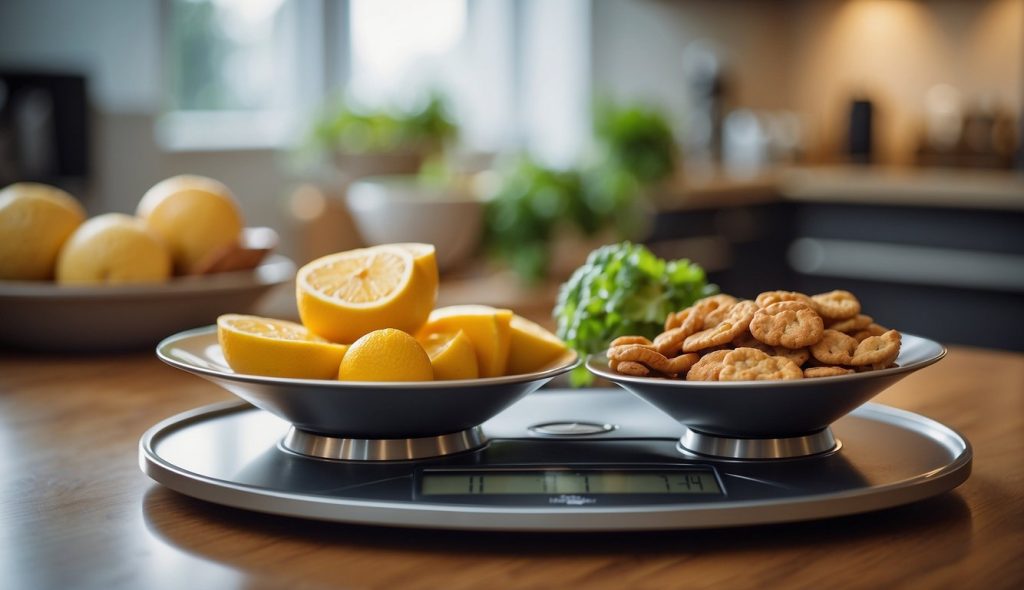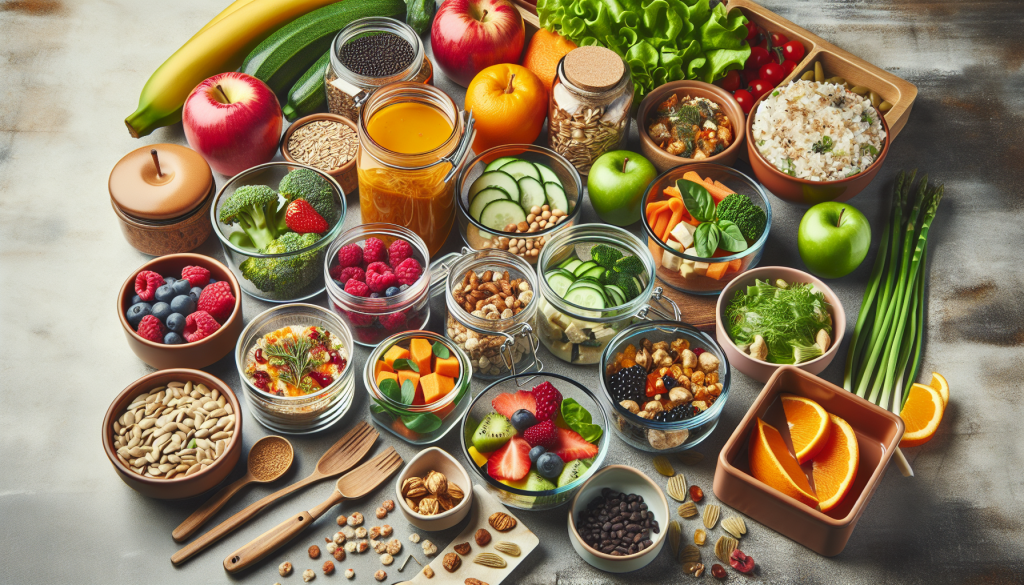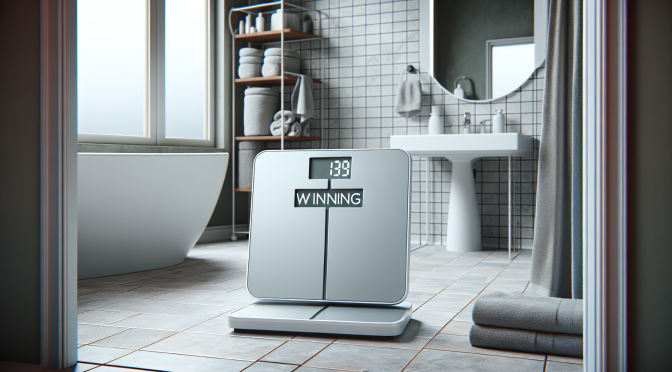Understanding the concept of negative caloric balance is crucial when you’re aiming to manage your weight. You have a negative caloric balance when you burn more energy than you get from eating and drinking. Your body compensates for the deficit by using stored energy, usually from body fat. This process is key to weight loss. Your body must find a new energy source once dietary calories are too low.

To have a negative caloric balance, you must consider your total daily energy expenditure (TDEE). It is the sum of all energy used in a day. This includes basal metabolic rate, physical activity level, and the energy used to digest food. Once you understand your TDEE, you can adjust your calorie intake accordingly. Approach this methodically. Creating too large a caloric deficit can backfire. It can cause muscle loss and slow metabolism.
In the end, the key to weight loss is balancing calories in and out without compromising nutrition. Focus on an eating plan rich in nutrients and a practical exercise routine. This will let you safely create the energy deficit needed to lose weight while staying healthy.
Definition of Negative Caloric Balance

Negative caloric balance, also known as a calorie deficit, occurs when you expend more calories than you consume over a period of time. This state is the fundamental principle behind weight loss. To understand this, you’ll need to consider two key components: energy intake and energy expenditure.
- Energy Intake: The calories you gain from consuming food and beverages.
- Energy Expenditure: You burn calories through basic bodily functions (Basal Metabolic Rate – BMR). You also burn them through physical activity and digestion.
Your body requires a certain number of calories to maintain your current weight. If your caloric intake falls below your expenditure, your body enters a state of calorie deficit. Here’s what happens:
- Survival Strategy: As a survival strategy, your body turns to stored energy sources to compensate for the lack of energy from food.
- Utilizing Stored Fat: Your body breaks down stored fat to use as fuel, which can lead to weight loss.
- Adjustments: If the negative energy balance continues, your body makes metabolic adjustments. It may lower BMR to conserve energy.
Importance of Understanding Energy Balance for Weight Management

Understanding energy balance is crucial for effective weight management. Energy balance is the relationship between the calories you consume (energy in) and the calories you expend (energy out). Maintaining energy balance means your calorie intake equals your calorie expenditure. This balance stabilizes your body weight.
When you consume more calories than you burn, you achieve a positive energy balance, leading to weight gain. On the other hand, a negative energy balance occurs when you burn more calories than you consume, resulting in weight loss. Knowledge of this concept helps in making informed decisions about your diet and exercise regimen.
To manage weight sustainably, adjust your calories and activity to match your goals. Normal body processes and daily activities burn calories. But, extra exercise raises your energy use. Monitoring and adjusting your calorie intake and output is vital. This is especially key for preventing and managing obesity.
Keep tabs on your energy balance:
- Input: Monitor the calories in food and beverages.
- Output: Track calories burned through basal metabolic rate and physical activity.
Understanding Energy Balance
When you manage your weight, the concept of energy balance is crucial. Your body seeks homeostasis. That is a state of perfect energy balance. In it, the calories you eat match those you burn to run your body’s functions and activities.
Energy Input
Energy input – the calories in – refers to the energy you gain from the food and beverages you consume. Every choice you make, from a nutrient-dense apple to a sugary soft drink, contributes to your energy intake. Your diet should provide sufficient calories to meet your energy demands. For most people, this is typically between 1,500 and 2,500 calories per day, but it varies based on individual factors like age, sex, and lifestyle.
Energy Output
Your energy output is the total number of calories you burn. This includes your basal metabolic rate (BMR), which is about 60-75% of calorie use. BMR is the energy your body needs at rest for fundamental functions like breathing and circulation.
- Physical Activity: This includes exercise and other movements which can greatly increase your energy expenditure.
- Thermic Effect of Food: Digesting, absorbing, and processing the nutrients you consume also burns calories.
In short, to have negative caloric balance and maybe lose weight, eat fewer calories than you burn.
Caloric Intake from Food and Beverages
Your daily caloric intake consists of the total calories consumed from all food and beverages. You must understand how different macronutrients add to your energy intake. They all have unique calories. On average, carbohydrates and proteins provide about 4 calories per gram, while fats offer 9 calories per gram. Alcoholic drinks also contain calories, providing approximately 7 calories per gram.
Balancing your diet is key to managing your caloric intake. Each macronutrient not only provides energy but also plays specific roles in your body’s functioning. Here’s a brief overview:
- Carbohydrates: Your primary energy source, found in foods like grains, fruits, and vegetables.
- Proteins: Essential for growth and repair, available from meats, dairy, and legumes.
- Fats: Necessary for hormone production and cell health, sourced from oils, nuts, and seeds.
Whether you aim to maintain, lose, or gain weight, you must understand your energy balance. It’s the difference between the calories you consume and expend.
| Macronutrient | Calories per gram |
|---|---|
| Carbohydrates | 4 |
| Proteins | 4 |
| Fats | 9 |
| Alcohol | 7 |
New research implies that calorie content quality affects health outcomes. The same calories from whole foods versus processed ones might affect your body differently. So, choosing nutrient-rich options lets you meet your body’s needs well. It also helps manage calories.
Factors Influencing Caloric Intake
When managing your caloric intake, several factors come into play. You need to understand these variables. They greatly affect how many calories you consume.
- Dietary Habits: Your eating patterns and meal frequency can either increase or decrease caloric intake. Eating too much or having large portion sizes leads to more calories. But, habits like meal planning may help manage intake.
- Portion Sizes: Careful attention to portion control is critical. Large portions can contribute to an increased caloric intake, often without you realizing it. Using smaller plates and checking serving sizes can curb inadvertent overeating.
- Food Choices: The quality of the food you eat has a considerable impact. Nutrient-dense foods, such as fruits, vegetables, and whole grains, generally make you feel full. And they do so with fewer calories. They do this better than sugary, fatty processed foods.
- Genetics: Your genetic makeup can influence your appetite and how you metabolize food, which in turn can affect caloric intake. While you can’t change your genes, understanding how they affect your eating habits can help in managing your diet.
- Appetite: Hormonal fluctuations can also modulate appetite and thus caloric intake. For instance, stress can either suppress or heighten the desire to eat. Being mindful of your hunger cues allows you to eat in response to physical need rather than emotional triggers.
Calculating Energy Balance

To effectively manage your weight, it’s essential to understand the energy balance equation. This involves counting the calories you eat. You count them against the calories you burn. This happens through activities and bodily functions.
Energy Balance Equation
Your energy balance determines whether you will maintain, gain, or lose weight. It is a simple yet powerful formula: [Calories In] – [Calories Out] = Energy Balance. Eating more calories than you burn leads to weight gain. Eating fewer leads to weight loss. To calculate this, add the thermic effect of food (calories burned through digestion). Then, add your basal metabolism (calories burned at rest) and calories burned through physical activity.
Determining Caloric Needs
Several factors, including your age, sex, and activity level, influence your daily caloric needs, which is the energy you require. To estimate these needs, you can use the Basal Metabolic Rate (BMR) formulas. They calculate an estimate based on the factors above. For example, an often-used BMR formula for men is: BMR = 88.362 + (13.397 x weight) + (4.799 x height) – (5.677 x age). For women: BMR = 447.593 + (9.247 x weight) + (3.098 x height) – (4.330 x age). You should adjust this according to your activity level to get your Total Energy Expenditure (TEE).
Factors Affecting Energy Expenditure
The calories your body burns can vary greatly based on several factors. Your sex, age, body fat, and hormones influence your BMR. BMR makes up about 60-75% of your daily calorie use. Regular physical activity increases your energy use during the activity. It also boosts your metabolic rate. Remember, TEE is the sum total of your BMR, thermic effect of food, and physical activity level. Changing any of these parts will alter your energy use. This will affect your energy balance.
Negative Caloric Balance: Frequently Asked Questions
Q: What happens if you have a negative calorie intake?
A: Having a negative calorie intake means consuming fewer calories than your body needs to maintain its current weight. In this situation, your body will start using stored fat for energy, leading to weight loss over time. While creating a calorie deficit is essential for the success of your weight loss efforts, it’s important to do so in a healthy and sustainable way. Eating very few calories can cause nutrient deficiencies. It can also harm your metabolism and health. You must focus on nutrient-dense foods. Also, consult a healthcare professional or dietitian. They will ensure you meet your body’s nutritional needs while losing weight.
Q: What does negative energy balance mean?
A: Negative energy balance occurs when the calories expended by the body exceed the calories consumed through food and drink. This state prompts the body to utilize stored energy, typically in the form of fat, to meet its energy needs. Negative energy balance is a key component of weight loss, as it leads to a reduction in body fat over time. However, it’s important to achieve this balance in a healthy way. This means focusing on nutrient-dense foods and regular physical exercise. It’s wise to get guidance from a healthcare pro or a dietitian. They will ensure you meet your body’s nutritional needs while aiming for a negative energy balance.
Q: Do negative calorie foods exist?
A: Some say certain foods have negative calories. They supposedly take more energy to digest than they provide. This would result in a negative caloric effect. Some foods, like celery, lettuce, and cucumbers, are often cited as “negative calorie” foods. This is due to their low calorie and high fiber water content. But, there is little scientific evidence for this claim. These foods are low in calories and high in fiber. But, digesting them doesn’t burn enough energy to cause a calorie deficit. Focus on a balanced diet. It should include a variety of nutrient-dense foods. Don’t rely only on the idea of negative calorie foods for weight loss.
Q: What is considered a healthy daily negative caloric balance to reduce body weight?
A: A healthy daily negative caloric balance for weight reduction typically ranges from 500 to 1000 calories. This small deficit allows for slow weight loss. It promotes fat loss while limiting the risk of muscle loss and metabolic slowdown. It’s important to reach this deficit with fewer calories from nutrient-rich foods and more exercise. It’s better to do this than to use extreme or unsustainable measures. Also, people’s calorie needs vary based on factors like age, gender, weight, and activity level. So, it’s wise to consult a healthcare professional or a registered dietitian. They can help you find a healthy calorie deficit for your weight loss goals.
Q: What are the long term effects of negative energy balance on body composition?
A: Long-term negative energy balance can have several effects on body composition. It can cause weight loss and less body fat. But, too much negative energy balance can also decrease muscle mass. This can hurt body composition. Muscle is crucial for metabolism and function. Also, long-term energy deficiency without enough nutrients can cause nutrient deficiencies. It can also lead to lower bone density, hormonal imbalances, and a slower metabolism. It’s important to achieve and keep a negative energy balance. You should do so in a healthy and sustainable way. This means getting enough nutrients and keeping lean muscle. You can do this with a balanced diet and exercise. Talking to a healthcare professional or a dietitian can help. They can reduce harm to body composition.

